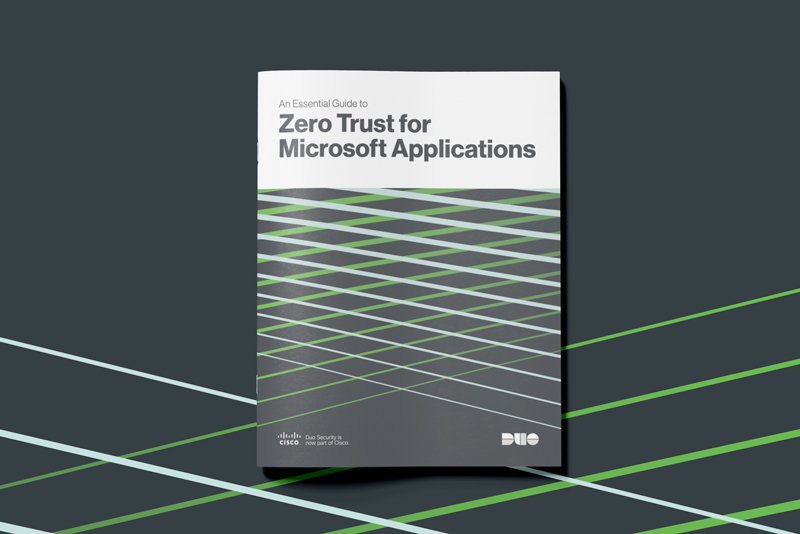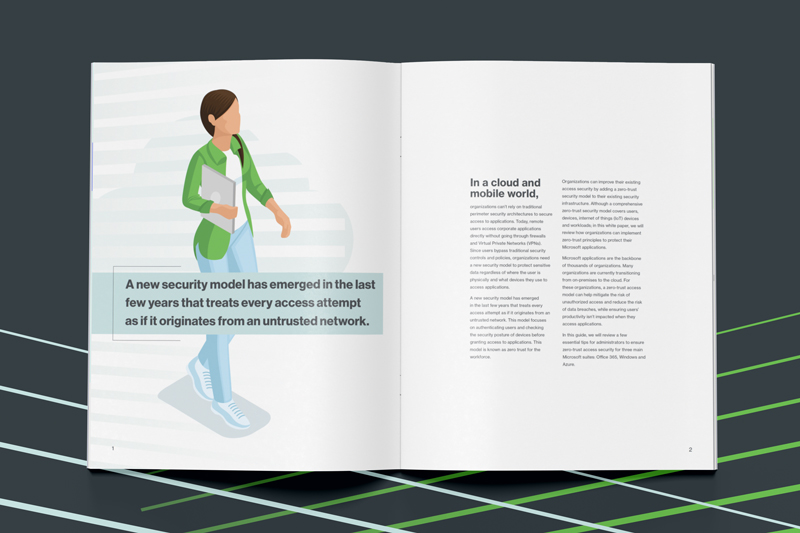An Essential Guide to Zero Trust for Microsoft Applications
In this guide, you'll learn:
- How the shift from on-premises to cloud applications requires a new approach to secure application access
- How a zero-trust security model helps reduce the risk of data breaches and mitigates the risk of unauthorized access
- Why organizations need simple, secure access to Microsoft applications without introducing friction for their end-users
- Essential tips for administrators to ensure zero-trust access security for Microsoft applications (Office 365, Windows and Azure)
- How to establish user trust, gain visibility into devices, enforce adaptive policies and more to secure access to key Microsoft applications
Microsoft applications are the backbone for thousands of organizations. They’re ubiquitous.
As these Microsoft-powered organizations prepare to shift their applications from on-premises to the cloud, they can no longer rely solely on traditional perimeter security architectures to secure access to applications.
Today, remote users access corporate applications directly without going through firewalls and Virtual Private Networks (VPNs). Since users bypass traditional security controls and policies, organizations need a new security model to protect sensitive data regardless of where the user is and what devices they use to access applications.
They require a method that ensures simple, secure access to Microsoft applications without introducing friction for their end-users.
A new security model has emerged that treats every access attempt as if it originates from an untrusted network. Known as zero trust for the workforce, this model focuses on authenticating users and checking the security posture of their device before granting access to applications.
For organizations that leverage Microsoft application suites like Office 365, Windows and Azure, a zero-trust access model can help mitigate the risk of unauthorized access and reduce the risk of data breaches, while ensuring that user productivity isn’t impacted. Users can securely access applications from anywhere, at any time and from any device.
In this guide, we share essential tips for administrators to ensure zero-trust access security for three key Microsoft application suites: Office 365, Windows and Azure. It highlights the need for a zero-trust approach to securing Microsoft applications and outlines the benefits, including:
- Establishing user trust
- Gaining visibility into BYOD (bring your own device)
- Establishing device trust
- Enforcing adaptive policies
- Enforcing compliance policies
- Implementing role-based access control
Download our guide, An Essential Guide to Zero Trust for Microsoft Applications, now and learn how to secure key Microsoft applications, and why a zero-trust approach to securing Microsoft applications (and all of your other applications) helps reduce risk without sacrificing simplicity and ease of use.



